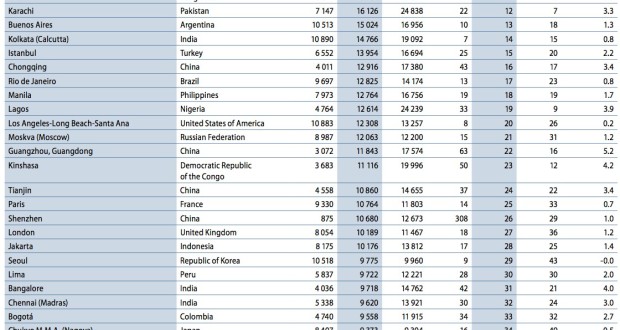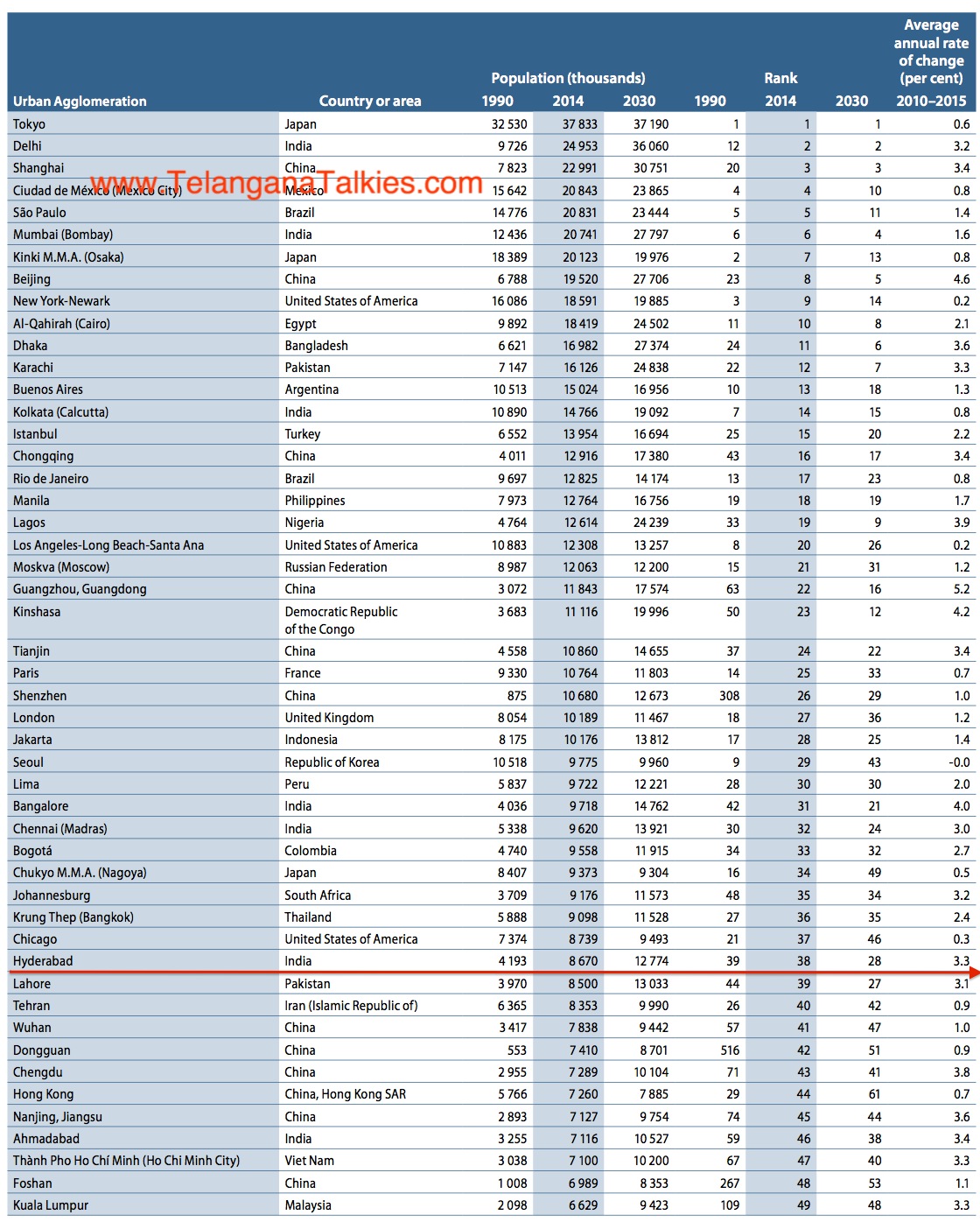Hyderabad is set to become a megacity, with a population more than 1 Crore, over the next decade. Hyderabad is one of the 4 cities in India that will become megacities over the next decade.
Hyderabad’s population more than doubled since 1990 but it ranked almost same as 38th most populous city now and then.
The city’s population is estimated to increase to 1.277 crore by 2030, becoming the 28th most populous city in the world by 2030.
In its 2014 revision of its report ‘World Urbanisation Prospects’, the United Nations’ department of Economic and Social Affairs stated that Hyderabad’s population would reach 89.44 lakh by 2015.
China alone has 6 megacities and 10 large cities with populations between 5 and 10 million in 2014, and it will add 1 more megacity and 6 more large cities by 2030.
India has 3 megacities (Delhi, Mumbai, Kolkata) and 6 large cities with populations between 5 and 10 million (Bangalore, Chennai, Hyderabad, Ahmadabad, Pune and Surat). The first 4 of the large cities would be megacities by 2030.
So both China and India would have 7 megacities each by 2030. Outside of China and India, Asia has seven other megacities and eleven other large cities in 2014.
Megacities are notable for their size and concentration of economic activity, but are home to only about one in eight of the world’s urban dwellers.
In 1990 there were 10 cities with more than 10 million inhabitants, and these so-called megacities were home to 153 million people, representing less than 7 per cent of the global urban population. Today, the number of megacities has nearly tripled to 28, the population they contain has grown to 453 million, and these agglomerations now account for 12 per cent of the world’s urban dwellers.
Tokyo is the world’s largest city with an agglomeration of 38 million inhabitants, followed by Delhi with 25 million, Shanghai with 23 million, and Mexico City, Mumbai and São Paulo, each with around 21 million inhabitants.
By 2020, Tokyo’s population is projected to begin to decline, although it will remain the world’s largest agglomeration in 2030 with 37 million inhabitants, followed closely by Delhi, whose population is projected to rise swiftly to 36 million.
The rural population of the world has grown slowly since 1950 and is expected to reach its peak in a few years. The global rural population is now close to 3.4 billion and is expected to decline to 3.2 billion by 2050. Africa and Asia are home to nearly 90 per cent of the world’s rural population. India has the largest rural population (857 million), followed by China (635 million). According to the UN urbanization report, most of the cities are not geared for this kind of population explosion and the cities would transform highly to accommodate the populations.
 Telangana Talkies | Leading Telangana News, Movies & Entertainment Portal Website with the latest news from Telangana. We present to the world politics, movies, business updates from Telangana & the capital Hyderabad
Telangana Talkies | Leading Telangana News, Movies & Entertainment Portal Website with the latest news from Telangana. We present to the world politics, movies, business updates from Telangana & the capital Hyderabad


